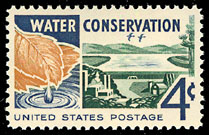
Back Gewässerschutz ALS ترشيد استهلاك المياه Arabic জল সংৰক্ষণ Assamese পানি সংরক্ষণ Bengali/Bangla Gewässerschutz German Eficiencia hídrica Spanish Veekaitse Estonian حفاظت از آب Persian Vesistönsuojelu Finnish Protection de l'eau French

Water conservation aims to sustainably manage the natural resource of fresh water, protect the hydrosphere, and meet current and future human demand. Water conservation makes it possible to avoid water scarcity. It covers all the policies, strategies and activities to reach these aims. Population, household size and growth and affluence all affect how much water is used.
Climate change and other factors have increased pressure on natural water resources. This is especially the case in manufacturing and agricultural irrigation.[1] Many countries have successfully implemented policies to conserve water conservation.[2] There are several key activities to conserve water. One is beneficial reduction in water loss, use and waste of resources.[3] Another is avoiding any damage to water quality. A third is improving water management practices that reduce the use or enhance the beneficial use of water.[4][5]
Technology solutions exist for households, commercial and agricultural applications to reduce the . Water conservation programs involved in social solutions are typically initiated at the local level, by either municipal water utilities or regional governments.
- ^ "Measures to reduce personal water use - Defra - Citizen Space". consult.defra.gov.uk. Retrieved 2021-09-13.
- ^ "Cases in Water Conservation: How Efficiency Programs Help Water Utilities Save Water and Avoid Costs". EPA.gov. US Environmental Protection Agency.
- ^ Cite error: The named reference
:1was invoked but never defined (see the help page). - ^ Cite error: The named reference
Vickers, Amy 2002was invoked but never defined (see the help page). - ^ Cite error: The named reference
:2was invoked but never defined (see the help page).